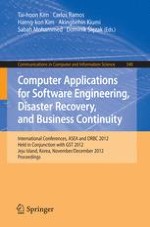2012 | Buch
Computer Applications for Software Engineering, Disaster Recovery, and Business Continuity
International Conferences, ASEA and DRBC 2012, Held in Conjunction with GST 2012, Jeju Island, Korea, November 28-December 2, 2012. Proceedings
herausgegeben von: Tai-hoon Kim, Carlos Ramos, Haeng-kon Kim, Akingbehin Kiumi, Sabah Mohammed, Dominik Ślęzak
Verlag: Springer Berlin Heidelberg
Buchreihe : Communications in Computer and Information Science
